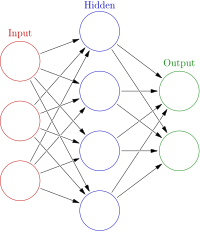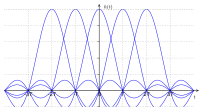
Improved Least Squares Approaches for Differential Received Signal Strength-Based Localization with Unknown Transmit Power
Sign Up to like & getrecommendations! Published in 2020 at "Wireless Personal Communications"
DOI: 10.1007/s11277-019-06791-3
Abstract: In this paper we consider the problem of improving unknown node localization by using differential received signal strength (DRSS). Many existing localization approaches, especially those using the least squares methods, either ignore nonlinear constraint among… read more here.
Keywords: least squares; based localization; received signal; signal strength ... See more keywords

Fine-grained azimuthal direction of arrival estimation using received signal strengths
Sign Up to like & getrecommendations! Published in 2017 at "Electronics Letters"
DOI: 10.1049/el.2017.0456
Abstract: We propose a direction of arrival (DoA) estimation technique, which is enabled by a single printed patch antenna capable of four reconfigurable beams at the operative frequency of 2.45 GHz. The direction of the messages… read more here.
Keywords: direction; estimation; fine grained; direction arrival ... See more keywords

Tilted-angle insensitive received signal strength in visible light positioning systems using a deep neural network trained by synthetic data
Sign Up to like & getrecommendations! Published in 2023 at "AIP Advances"
DOI: 10.1063/5.0147861
Abstract: Despite extensive research on received signal strength (RSS)-based visible light positioning (VLP), the receiver (RX) is assumed to stand vertically during the positioning process in most reported system designs. In this work, we propose a… read more here.
Keywords: signal strength; deep neural; light positioning; visible light ... See more keywords

Variational Bayesian Inference-Based Multiple Target Localization in WSNs With Quantized Received Signal Strength
Sign Up to like & getrecommendations! Published in 2019 at "IEEE Access"
DOI: 10.1109/access.2019.2915657
Abstract: The received signal strength (RSS)-based target localization is an important field of research with numerous applications in wireless sensor networks. By exploiting the sparsity of localization, the compressive sensing (CS) can be applied to develop… read more here.
Keywords: target localization; signal strength; target; received signal ... See more keywords

Whitelisting in RFDMA Networks
Sign Up to like & getrecommendations! Published in 2019 at "IEEE Access"
DOI: 10.1109/access.2019.2950754
Abstract: Uplink transmissions, within coexisting distinct sub-GHz technologies operating in the same unlicensed band, can be exposed to detrimental impact of the interference. In such scenarios, transmission scheduling becomes important for mitigating interference or minimizing the… read more here.
Keywords: rfdma; interference; received signal; signal power ... See more keywords

Adaptive Event-Driven Robust Set-Membership Estimation for Received-Signal-Strength-Based Moving Targets Localization
Sign Up to like & getrecommendations! Published in 2022 at "IEEE Internet of Things Journal"
DOI: 10.1109/jiot.2021.3138784
Abstract: This article presents an environmentally adaptive event-driven robust set-membership fusion estimator for received-signal-strength-based moving targets localization or tracking in resource-constrained mobile wireless sensor networks under the influence of unknown but bounded modeling and measurement uncertainties.… read more here.
Keywords: signal strength; event; adaptive event; received signal ... See more keywords

Maximum-Likelihood Sensor Node Localization Using Received Signal Strength in Multimedia With Multipath Characteristics
Sign Up to like & getrecommendations! Published in 2018 at "IEEE Systems Journal"
DOI: 10.1109/jsyst.2016.2550607
Abstract: Sensors are key to situation awareness and response and need to maintain time and position information to tag their measurement data. While local clocks can be used for time stamping, geotagging can be challenging for… read more here.
Keywords: localization; multimedia multipath; received signal; signal strength ... See more keywords

Camera Assisted Received Signal Strength Ratio Algorithm for Indoor Visible Light Positioning
Sign Up to like & getrecommendations! Published in 2019 at "IEEE Communications Letters"
DOI: 10.1109/lcomm.2019.2935713
Abstract: A novel camera assisted received signal strength ratio (CA-RSSR) positioning algorithm is proposed for visible light positioning (VLP) systems. The basic idea of CA-RSSR is to utilize visual information captured by the camera first, to… read more here.
Keywords: camera assisted; strength; assisted received; visible light ... See more keywords

A Received Signal Quality Evaluation Model for SPAD-Based LiDAR Receivers and Its Verification
Sign Up to like & getrecommendations! Published in 2023 at "IEEE Photonics Technology Letters"
DOI: 10.1109/lpt.2023.3272744
Abstract: In light detection and ranging (LiDAR) applications, the received signal is typically a series of echo patterns, and each pattern contains a predefined echo and a monitoring window with a random duration that depends on… read more here.
Keywords: lidar receivers; based lidar; model; received signal ... See more keywords

An ESPRIT-Based Approach for RF Fingerprint Estimation in Multi-Antenna OFDM Systems
Sign Up to like & getrecommendations! Published in 2017 at "IEEE Wireless Communications Letters"
DOI: 10.1109/lwc.2017.2731951
Abstract: Estimation of radio frequency fingerprint (RFF) of a transmitter from the received signal is often affected by the wireless communication channel. The existing approaches mainly rely on the channel reciprocity to obtain the RFF. In… read more here.
Keywords: estimation; fingerprint; esprit based; received signal ... See more keywords

Influence of Received Signal Strength on Prediction of Cluster Head and Number of Rounds
Sign Up to like & getrecommendations! Published in 2020 at "IEEE Transactions on Instrumentation and Measurement"
DOI: 10.1109/tim.2019.2932652
Abstract: Research studies reveal the fact that clustering improves energy efficiency and network lifetime in wireless sensor networks (WSNs). In clustering, cluster head (CH) selection and rotation are the key techniques that have been adopted over… read more here.
Keywords: number rounds; signal strength; prediction; energy ... See more keywords